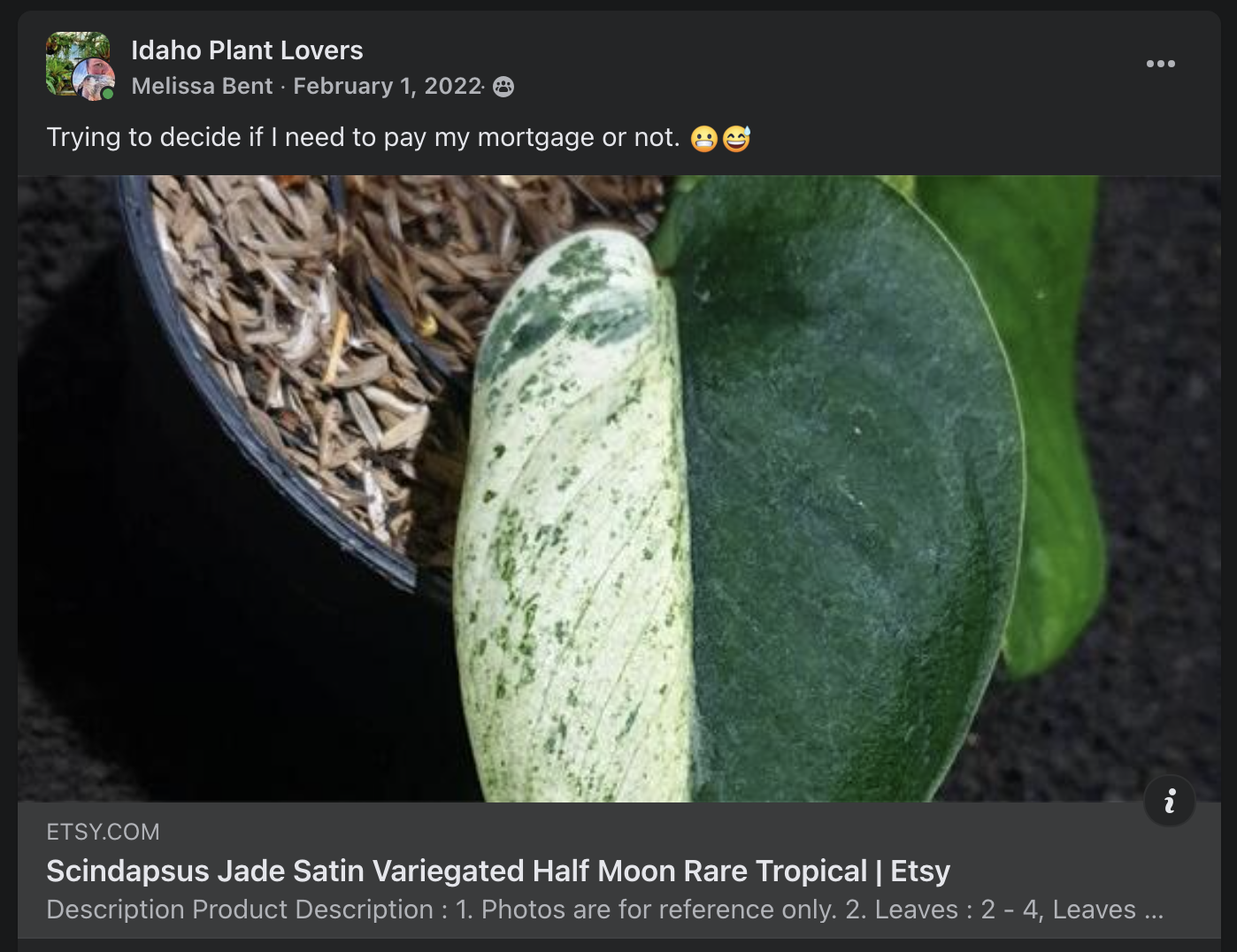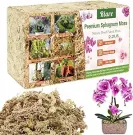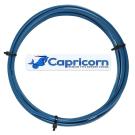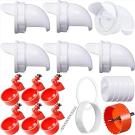The Beginning
I've always loved plants. Some of my earliest memories are of my mother and I planting our garden. We've always had them in our home and in our yard. From flowers (roses, gaillardia, dahlias, etc) to food (carrots, beans, dill, basil, rosemary, pears, apples, apricots, etc) we have grown nearly everything possible.
My love of houseplants grew when I got a home of my own. I fell in love with the beautiful variety. There are few plants I don't love.
Then came COVID lockdown in early 2020. And everyone started picking up hobbies they'd never tried before. Remember when everyone was baking bread? Or learning crafts (crochet anyone?)

Thrown in there was the great houseplant craze that gripped so many. Myself included. I started with what I could find locally. Pothos were my gateway plant. There are so many varieties beyond the normal jade or golden pothos that most people have in their offices. I found I loved the variegated cultivars like global green, marble queen, njoy, pearl and jade, etc. And that's just pothos. I started buying plants online—importing from overseas to get access to plants that I couldn't find locally. And people were play exorbitant prices for rare or scarce plants.
There are so many plants available in stores now that you would never have found before COVID held the world hostage.
But I knew that the time I was spending tending to these plants would, eventually, be taken up by life once the world opened up again. So I started thinking automation.
My background is in electronics and programming. I am a self-taught developer. But even before I wrote software, I was taking apart computers and electronics to figure out how things worked. I would repair broken appliances and electronics. Basically anything that I thought I might be able to fix.
Automated the Things
Automation is a big field these days. With the availability of cheap electronics and parts, and the emergence of Arduino, ESP32, and Raspberry Pi, more people than ever are starting to build custom automations to make their lives easier.
The first thing I tried was searching YouTube for watering projects like this one. Doing that search will return results with some kind of single microcontroller connected with a moisture meter. And it worked. But usually it would let you know that the plant was dry and needed to be water. Projects would do this with a variety of means. A red LED would light up. Or it would yell at you when you walked by saying, "Water me!"
I saw irrigation projects where people would water their indoor seedlings a certain amount everyday at the same time.
But I wanted something beyond both of those things.
The plants I have, all of them have different watering requirements. They might be in different sized pots and therefore require more water. Some need to dry out between watering. Some need to be kept evenly damp.
I also didn't want the system to require being plugged into a wall for every plant. That was a dealbreaker. I did want the possibility of the reader being wireless. That would allow the plant to be anywhere as long as the water could be connected to it.
Sample Videos from Research
Formulating the Plan
My idea was basically like a lawn irrigation system with each "station" being a valve tied to a plant and the controller being the where the water source was connected.
This would allow the use of a single water source like a vase, a big 5 gallon bucket, or whatever you needed that would then be used to water all of the plants on that station.
The more I thought it through, the more excited I got. I could see so many different use cases and add-ons that would make the system as custom as I needed.
Funny enough, I worked on the details in my head and did my research over the course of 2021 but I didn't really start working on it until early 2022 when I actually came down with COVID for the first time. In between sleeping for hours at a time I would take 30 minutes to setup a circuit and learn to program my Arduino device. I ended up with a simple working device that would water my plant when the moisture sensor hit a certain reading.
Once I had a working theory, I would need to formalize the plan. But this was my starting point. And it would feed the rest of my design, development, and planning.












